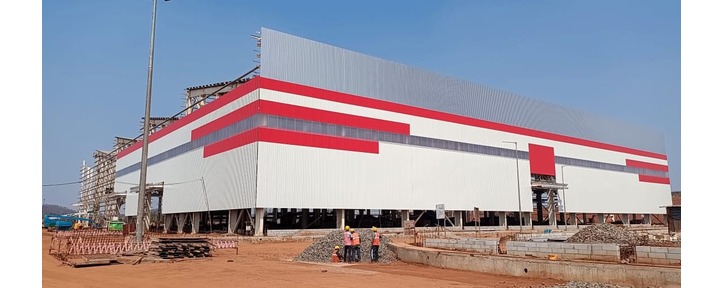Various Types of Leaks a Commercial Building Is Prone To
Leaks in commercial buildings can have a large negative impact on any business, leading to both significant disruption and expensive repairs. Not only can they cause damage directly due to the water itself, but they can also cause long-term damage to ceilings, walls, and foundations. Proper installation of metal roofing sheets can help to reduce the risk of leaks. However, it's still important for building owners and maintenance teams to be aware of the different types of leaks that may occur.
If the leak is fixed quickly and professionally, it's likely to decrease productivity due to the involvement of workers and tradespeople during repair or restoration. Conversely, investing in routine maintenance to detect problems early greatly reduces the risk of serious leaks.
Here Are the Different Types of Leaks That Can Occur in a Commercial Building and How to Prevent Them:
1. Roof Leaks
Roof leaks are one of the most common types seen in commercial buildings due to their exposure to the elements. Several factors, including poor installation, damage from weather or falling objects, and age can cause roof leaks. Regular maintenance and inspection of a building's roof can help prevent these leaks. However, leaking can also affect the look and lifespan of the building's roof, so it is a good idea to consult a reputed facade manufacturer during construction to prevent this issue.
2. Plumbing Leaks
Plumbing leaks are also common in commercial buildings and can be caused by faulty plumbing fixtures, pipes that have become loose over time, or damaged seals. It is important to check for water leaks or pools in the building and have a licensed plumber inspect the plumbing system regularly to check for potential issues.
3. HVAC Leaks
Water leaks in commercial buildings can cause significant disruption and are often the result of an underlying HVAC system issue. These issues can directly result from condensation building up in the system or from damaged hoses, pipes, or ducts. Regular inspections of the entire HVAC system should be conducted to minimise any potential damage and disruption occurring due to water leaks. Any signs of deterioration or mould growth should be addressed immediately by qualified technicians to ensure air quality is maintained and water leaks are prevented.
4. Rain Penetration
Rain penetration is another common cause of leaks in commercial buildings, as water can enter through cracks or gaps in the building's exterior. Regular inspection of the building's exterior is important to ensure that any potential issues are addressed promptly. A good quality zinc wall cladding system can help to protect a building from rain penetration and leaks.
These are a few of the most common leaks that might happen in commercial buildings. To prevent leaks and subsequent damage to the building, it is important for maintenance teams and building owners to be aware of the risks.
Importance of Early Identification and Inspection
Early identification and inspection of leaks are crucial to ensure they do not cause further damage or disruption. Therefore, building owners and maintenance teams need to be aware of the different types of leaks that can occur in a commercial building and carry out regular inspections to check for any signs of damage. This can help to reduce the risk of costly repairs and disruption.
In conclusion, leaks are a common issue in commercial buildings but can be prevented with proper maintenance and inspections. By familiarising yourself with the different types of leaks a commercial building is prone to, you can ensure that your building remains in top condition.



